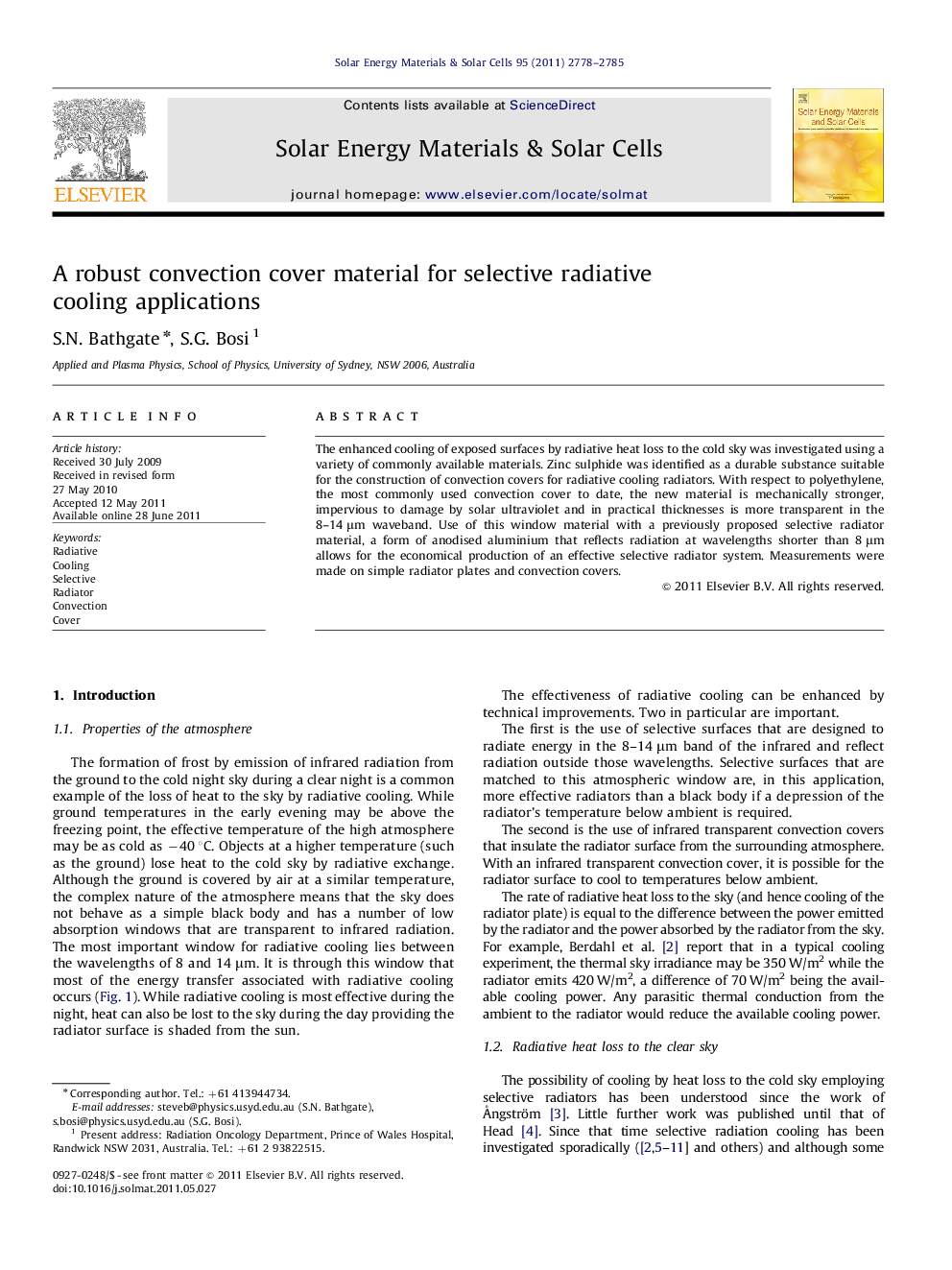| Article ID | Journal | Published Year | Pages | File Type |
|---|---|---|---|---|
| 78609 | Solar Energy Materials and Solar Cells | 2011 | 8 Pages |
The enhanced cooling of exposed surfaces by radiative heat loss to the cold sky was investigated using a variety of commonly available materials. Zinc sulphide was identified as a durable substance suitable for the construction of convection covers for radiative cooling radiators. With respect to polyethylene, the most commonly used convection cover to date, the new material is mechanically stronger, impervious to damage by solar ultraviolet and in practical thicknesses is more transparent in the 8–14 μm waveband. Use of this window material with a previously proposed selective radiator material, a form of anodised aluminium that reflects radiation at wavelengths shorter than 8 μm allows for the economical production of an effective selective radiator system. Measurements were made on simple radiator plates and convection covers.
Graphical abstractFigure optionsDownload full-size imageDownload as PowerPoint slideHighlights► Selective radiative cooling via the 8–14 μm atmospheric window. ► Proof-of-concept convection suppression window polyethylene has poor durability. ► Experiments showed that hot-pressed ZnS works as well but is far more durable.
